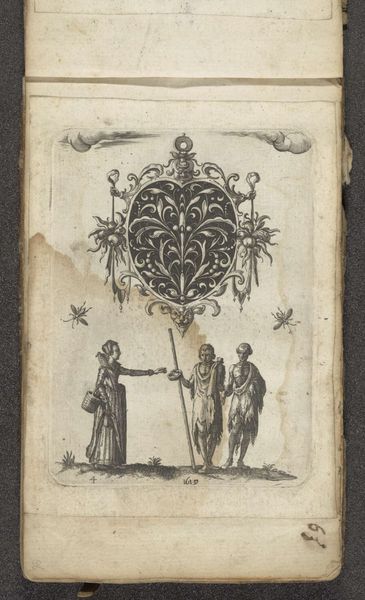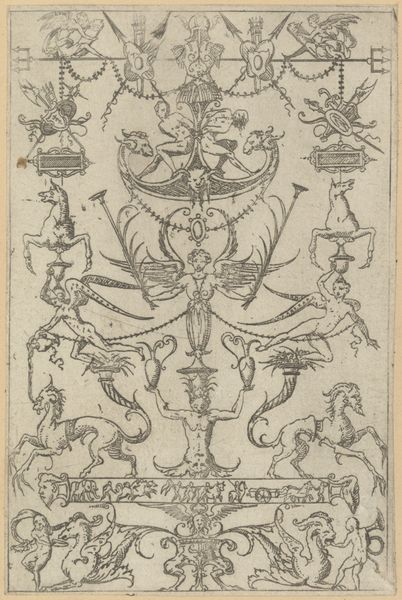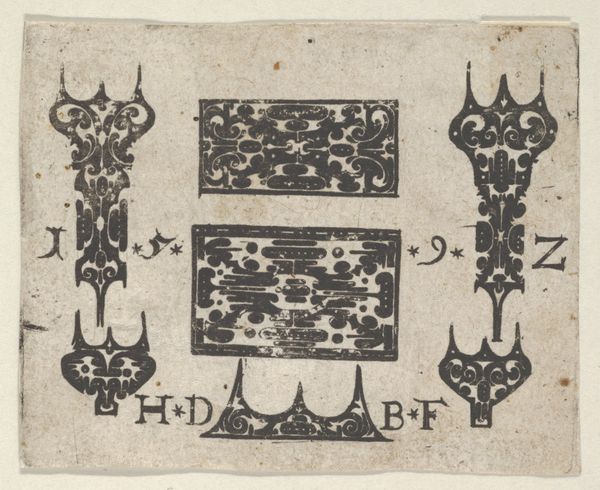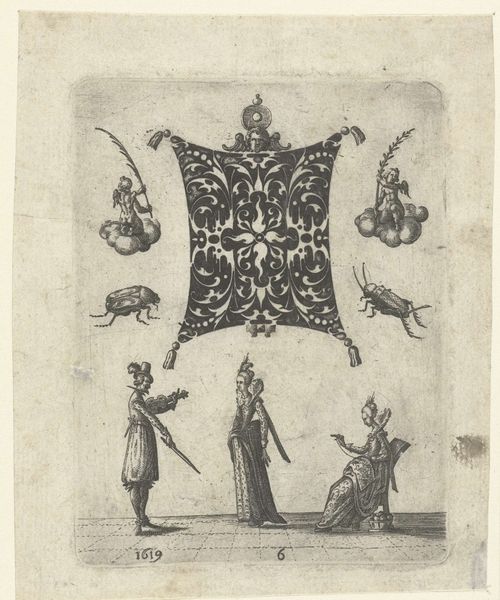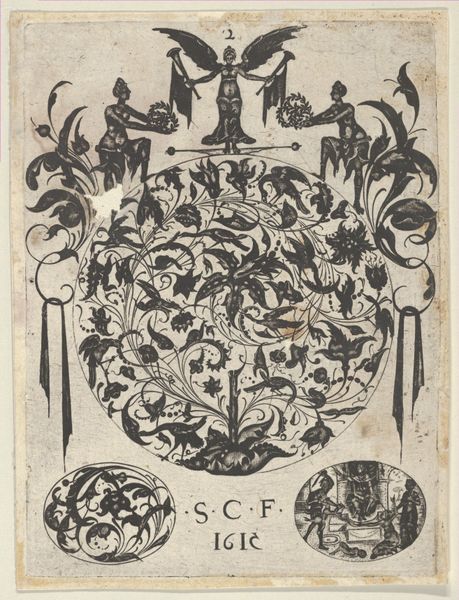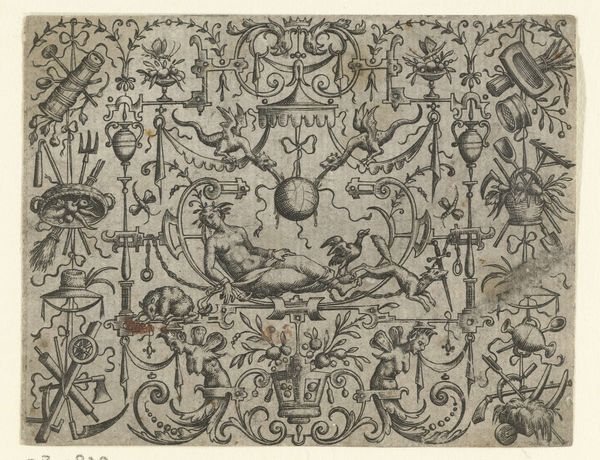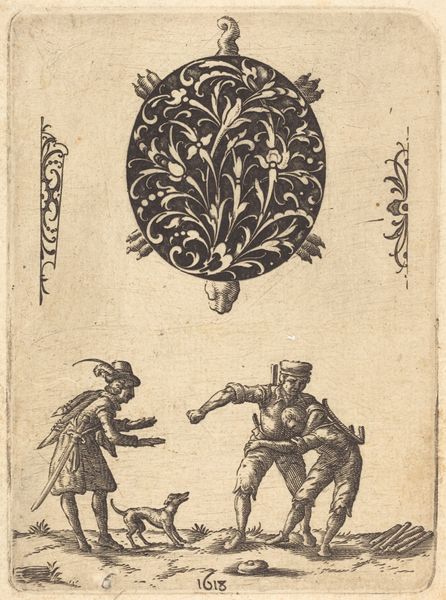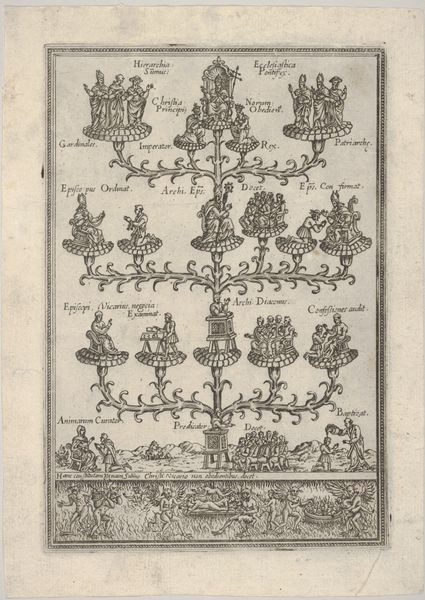
drawing, print, paper, engraving
#
drawing
#
baroque
# print
#
figuration
#
paper
#
coloured pencil
#
genre-painting
#
history-painting
#
engraving
Dimensions: height 103 mm, width 79 mm
Copyright: Rijks Museum: Open Domain
Curator: Here we have “Zwartornamenten in de vorm van een hanger en een driehoek,” or "Black Ornaments in the Shape of a Hanger and a Triangle," a print made in 1619 by Jean Toutin, now housed in the Rijksmuseum. Editor: It's arresting, isn’t it? The composition is quite peculiar; a blend of elegance and almost cartoonish figures frozen in rather absurd actions, really highlighting the theatrics embedded in these images. Curator: The figures remind me a bit of Commedia dell'arte characters. In 17th-century Europe, the imagery of conflict, often manifested in duels or battle scenes, served to legitimize noble authority and social hierarchy. The inclusion of fencing and martial themes ties into notions of honor and chivalry which permeated societal structure at the time. Editor: Exactly, I also read it as performative in that way. However, there’s also a clear sense of distance here, from the figures on stilts to those wielding foils. It could reflect emerging bourgeois culture emulating noble virtues, staging themselves into privileged roles. It mirrors an obsession with courtly manners spreading through a diversifying public sphere. Curator: The decorative ornaments, one resembling a heraldic shield, the other perhaps an abstracted coat of arms, act as visual anchors, suggesting an association with lineage or perhaps even aspirational branding. The insect motifs strike an interesting contrast. Insects, particularly during the baroque period, could symbolize vanity or impermanence—a counterpoint to the idea of eternal family status implied by heraldry. Editor: Right, almost a deconstruction! By placing them so prominently, does Toutin hint at the ephemerality of power? Moreover, are those figures at the top actually on stilts or is that a bench, literally a stage, implying anyone can access it if they learn the moves? Curator: That's a really thought-provoking perspective on access and performativity. These images raise compelling questions about societal facades. Editor: Agreed, art often offers opportunities for dissecting social constructs, providing a platform for conversations about legitimacy, roles, and power relations as we examine societal functions today. Curator: It certainly allows us to critically engage with questions of social performance and status that persist across the centuries.
Comments
No comments
Be the first to comment and join the conversation on the ultimate creative platform.
